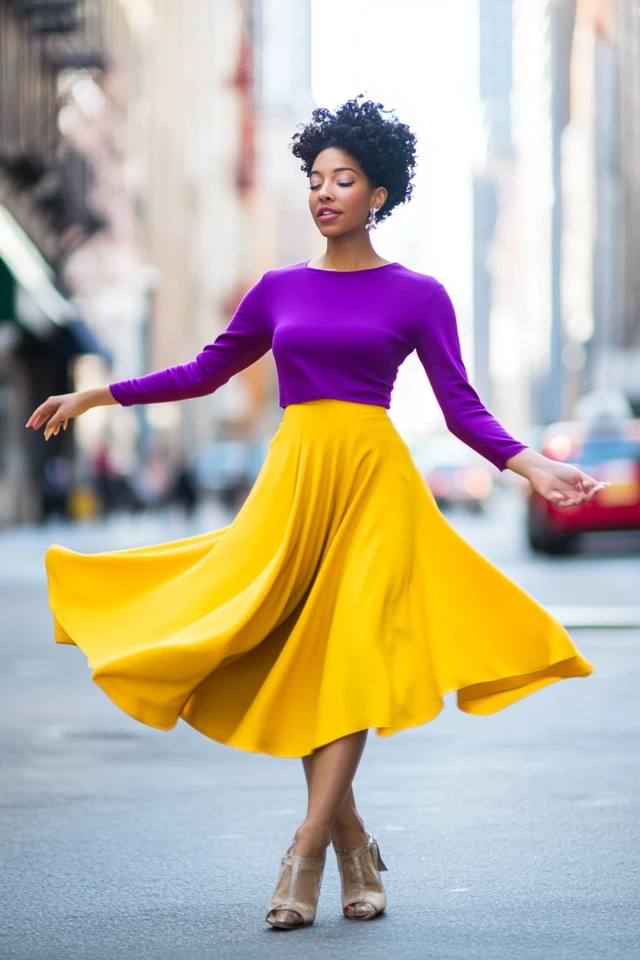Color is a powerful tool in fashion and design, capable of transforming outfits and spaces with its vibrancy and emotional impact. Understanding how to use complementary colors—those that lie opposite each other on the color wheel—can elevate your style, create visually appealing ensembles, and ensure your looks are both balanced and eye-catching. This comprehensive guide explores the concept of complementary colors, their significance, and practical ways to incorporate them into your wardrobe for harmonious and stylish appearances.
Introduction
Complementary colors are pairs of colors that, when combined, enhance each other’s intensity and create a striking contrast. These color pairs are foundational in the color wheel, making them essential knowledge for anyone looking to refine their fashion sense or design aesthetic. Whether you’re a fashion enthusiast, a designer, or someone who simply enjoys experimenting with colors, mastering the use of complementary colors can help you create harmonious and impactful looks that stand out.
About the Author and My Trend Boutique
This guide delves into the principles of complementary colors, their psychological effects, and practical tips on how to effectively incorporate them into your outfits. By the end of this article, you’ll have the confidence and knowledge to create visually stunning and balanced ensembles using the dynamic interplay of complementary hues.
Understanding Complementary Colors
What Are Complementary Colors?
Complementary colors are pairs of colors that are directly opposite each other on the color wheel. When placed side by side, they create a vibrant contrast that makes each color appear more vivid. The primary complementary pairs are:
- Red and Green
- Blue and Orange
- Yellow and Purple
These pairs are rooted in the color wheel’s structure, where each color complements its opposite by providing visual balance and harmony.
The Color Wheel
The color wheel is a circular diagram that organizes colors based on their chromatic relationships. It consists of primary, secondary, and tertiary colors arranged in a way that highlights how they interact with one another. Understanding the color wheel is fundamental to effectively using complementary colors, as it provides a visual reference for identifying harmonious color combinations.
Why Complementary Colors Matter
- Visual Impact: Complementary colors create a strong visual contrast, making each color appear more intense and vibrant.
- Balance: Using complementary colors can balance bold and subtle elements in an outfit, preventing any single color from overwhelming the look.
- Harmony: When used thoughtfully, complementary colors can create a harmonious and cohesive appearance that is pleasing to the eye.
The Psychology of Complementary Colors
Colors evoke emotions and can influence perceptions. Complementary colors, with their inherent contrast, can amplify these psychological effects:
- Red and Green: Red symbolizes energy and passion, while green represents calmness and nature. Together, they create a dynamic balance between excitement and tranquility.
- Blue and Orange: Blue conveys trust and serenity, whereas orange exudes enthusiasm and creativity. This combination balances cool and warm tones, offering both stability and vibrancy.
- Yellow and Purple: Yellow is associated with happiness and optimism, while purple signifies luxury and mystery. Their pairing brings together brightness and depth, resulting in a sophisticated and lively look.
Understanding these psychological associations can help you choose complementary colors that not only look good but also convey the desired mood and message.
Practical Tips for Using Complementary Colors
1. Start with One Dominant Color
Begin by selecting one dominant color for your outfit or space. This will serve as the foundation upon which you can add complementary accents. For example, if you choose blue as your dominant color, orange will be your complementary accent.
2. Use Complementary Accents
Incorporate the complementary color through accessories, shoes, belts, scarves, or jewelry. This allows you to add pops of color without overwhelming your overall look.
- Example: A navy blue dress paired with coral accessories creates a striking yet balanced ensemble.
3. Play with Patterns and Prints
Mix patterns that feature complementary colors. Stripes, florals, or geometric prints can incorporate both colors in a cohesive manner.
- Example: A floral blouse with hints of yellow and purple paired with solid-colored pants in one of the complementary shades.
4. Balance Bold with Neutral
To prevent the complementary colors from clashing, balance them with neutral tones like black, white, gray, or beige. Neutrals can soften the intensity of complementary pairs and create a more refined look.
- Example: A red top with green skirt accessorized with a neutral handbag and shoes.
5. Experiment with Layers
Layering allows you to incorporate complementary colors in a subtle way. Use outerwear, scarves, or cardigans in the complementary hue to add depth to your outfit.
- Example: A mustard yellow sweater layered over a purple dress with matching accessories.
6. Consider Proportions
Ensure that the complementary colors are proportionate within your outfit. One color should dominate while the other serves as an accent to maintain visual harmony.
- Example: A predominantly blue outfit with small orange accessories or vice versa.
7. Use Color Blocking
Color blocking involves pairing large blocks of complementary colors in a single outfit. This bold approach can create a modern and fashionable look when done thoughtfully.
- Example: An orange blazer paired with a blue dress creates a striking color-blocked ensemble.
Example Outfit Ideas
1. Elegant Evening Look
Outfit Components:
- Wine-colored dress
- Emerald green clutch
- Gold statement earrings
- Nude heels
Styling Tips:
- Let the wine dress be the focal point and use the emerald green clutch as a complementary accent.
- Add gold earrings to introduce a touch of glamour without overshadowing the main colors.
- Complete the look with nude heels to maintain balance.
2. Casual Day Out
Outfit Components:
- Mustard yellow sweater
- Royal blue jeans
- White sneakers
- Blue crossbody bag
Styling Tips:
- Pair the mustard sweater with royal blue jeans for a classic complementary color combination.
- Use a blue crossbody bag to tie the look together and add cohesion.
- Keep accessories minimal with white sneakers to maintain a casual vibe.
3. Professional Ensemble
Outfit Components:
- Teal blouse
- Orange pencil skirt
- Gray blazer
- Silver necklace
- Black pumps
Styling Tips:
- Balance the boldness of the teal and orange with a gray blazer as a neutral layer.
- Accessorize with a silver necklace to add elegance without introducing another bold color.
- Finish the look with black pumps for a polished and professional appearance.
4. Summer Festival Style
Outfit Components:
- Bright red tank top
- Lime green shorts
- White sandals
- Red sunglasses
- Green wristbands
Styling Tips:
- Embrace the high-energy pairing of red and green by coordinating your top and shorts.
- Use red sunglasses and green wristbands to reinforce the complementary color scheme.
- Keep the rest of the outfit neutral with white sandals to allow the colors to pop.
5. Night Out Glam
Outfit Components:
- Sapphire blue jumpsuit
- Tangerine clutch
- Silver heels
- Gold cuff bracelet
Styling Tips:
- Highlight the sapphire jumpsuit with a tangerine clutch for a vibrant contrast.
- Add silver heels to maintain a cool metallic touch that complements the blue.
- Incorporate a gold cuff bracelet to introduce warmth and balance the metallic accents.
FAQs
1. Can I mix more than two complementary colors in one outfit?
- Answer: While it’s possible to incorporate more than two complementary colors, it’s important to maintain balance to avoid a chaotic look. Stick to one dominant color and use the others as accents. Alternatively, use varying shades and tones of the complementary colors to create a cohesive and harmonious outfit.
2. Are complementary colors suitable for all skin tones?
- Answer: Yes, complementary colors can be flattering on all skin tones. The key is to choose the right shades that complement your undertones. For example, warmer complementary colors like mustard and wine often suit warm undertones, while cooler shades like royal blue and emerald green can enhance cool undertones.
3. How can I incorporate complementary colors into a monochromatic outfit?
- Answer: In a monochromatic outfit, you can add complementary colors through accessories such as scarves, belts, shoes, or jewelry. For instance, a monochromatic blue outfit can be accented with orange accessories to introduce complementary contrast without disrupting the overall harmony.
4. What are some common mistakes to avoid when using complementary colors?
- Answer: Common mistakes include using colors that are too bright or saturated, resulting in an overwhelming look, and failing to balance the colors proportionately. Avoid mixing complementary colors in large, equal amounts; instead, let one color dominate while the other serves as a subtle accent.
5. Can complementary colors be used in patterns?
- Answer: Yes, complementary colors work well in patterns. Combining patterns that feature complementary colors can create visually interesting and dynamic outfits. Ensure that the patterns vary in scale and that the colors are balanced to maintain a cohesive look.
Picture Gallery
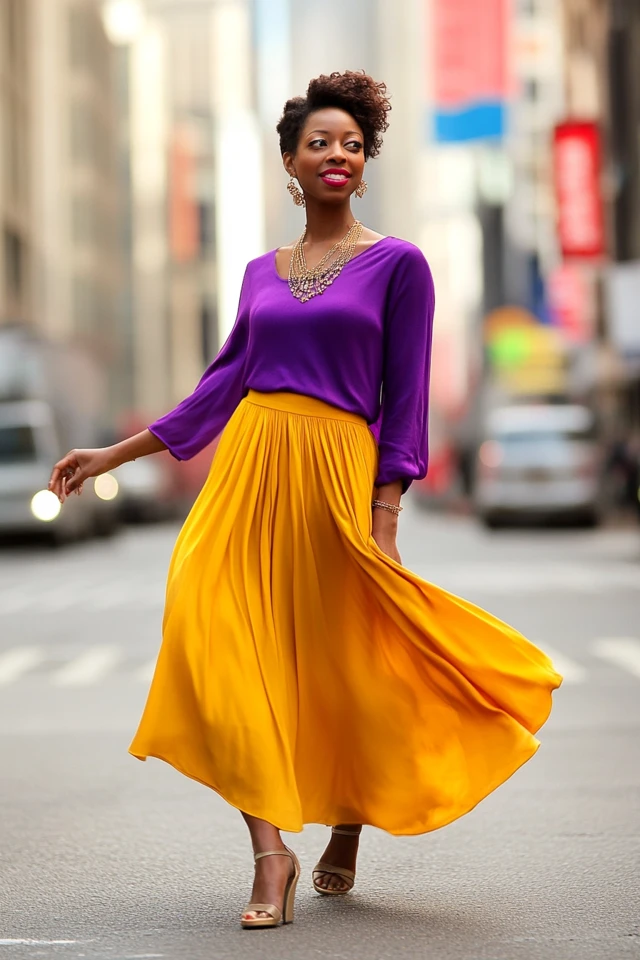
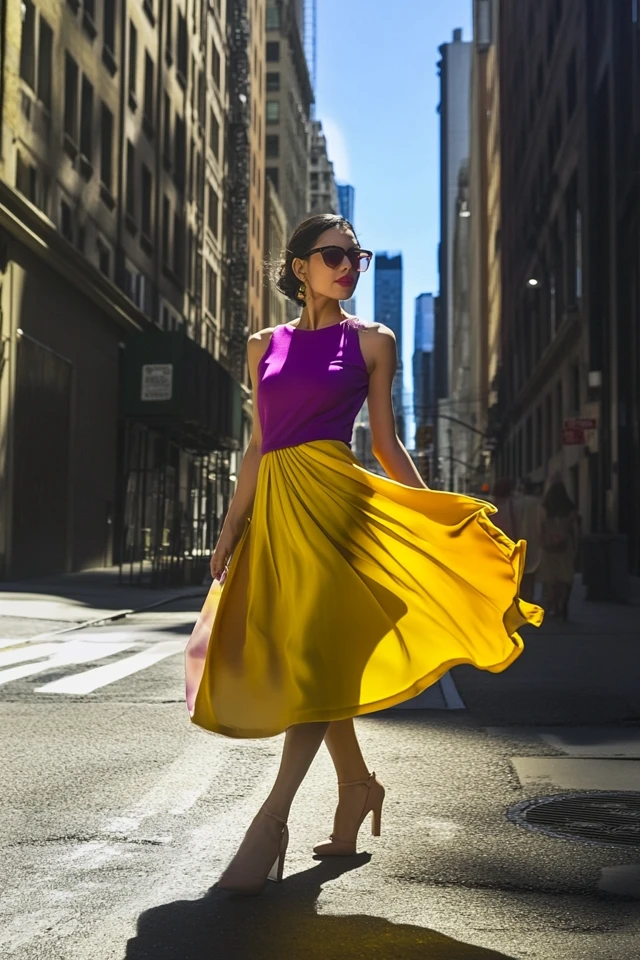
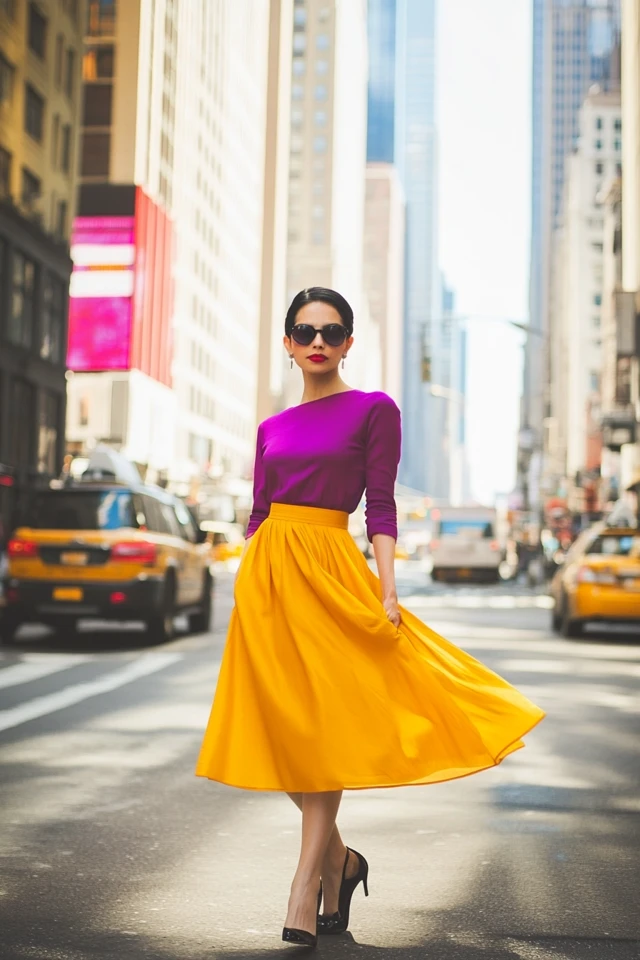
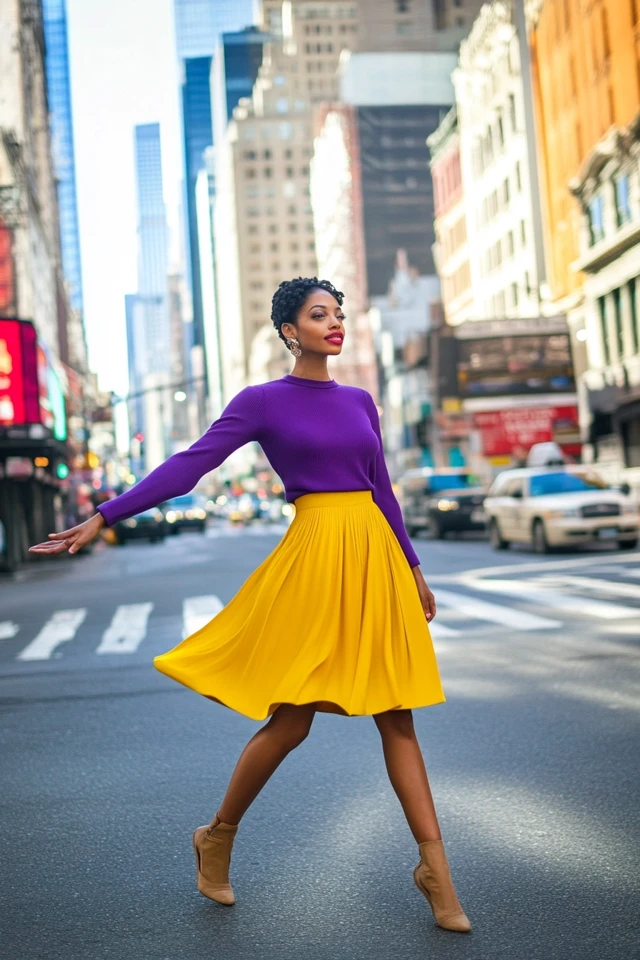
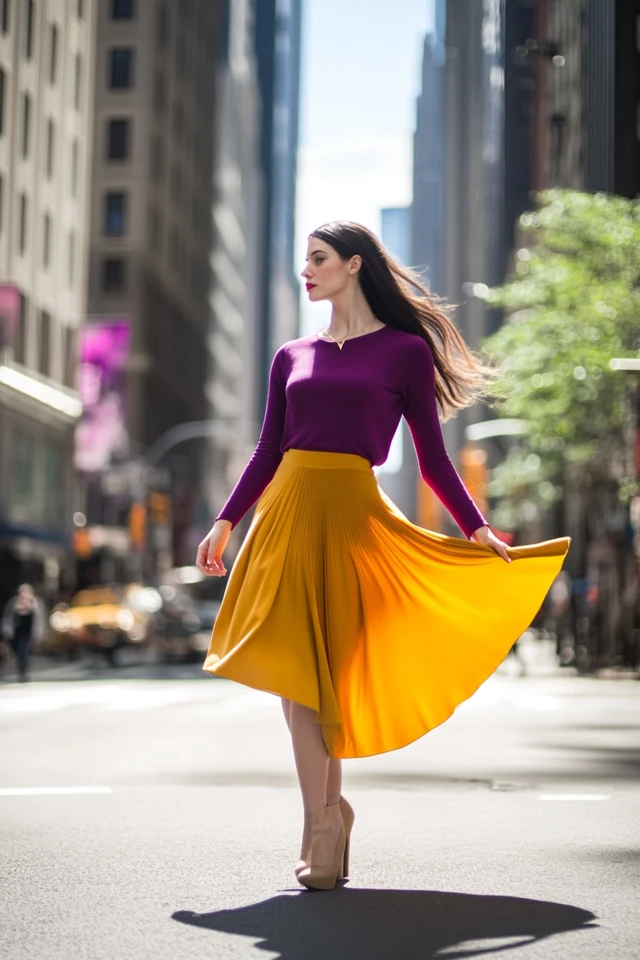
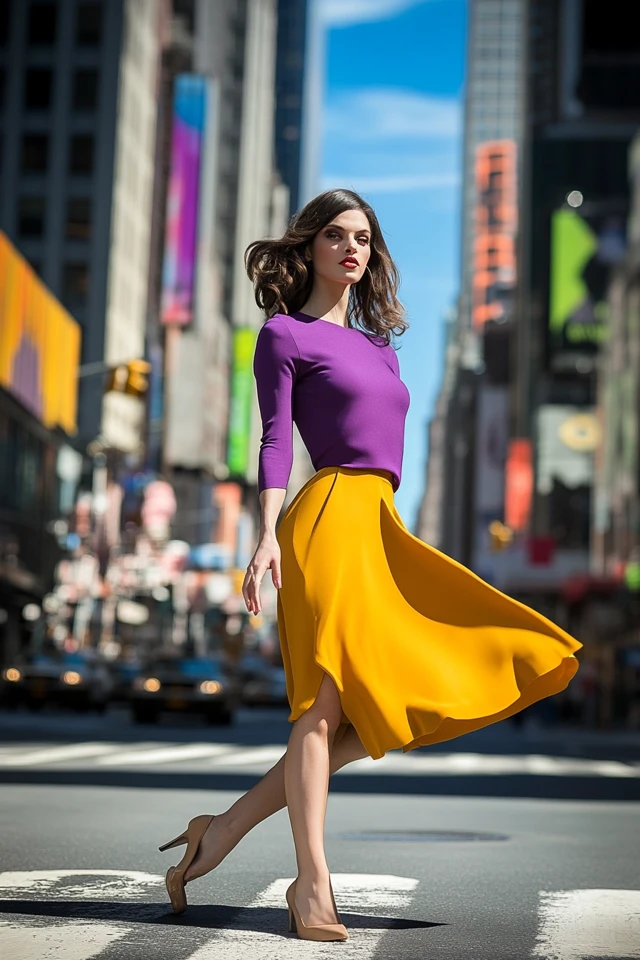
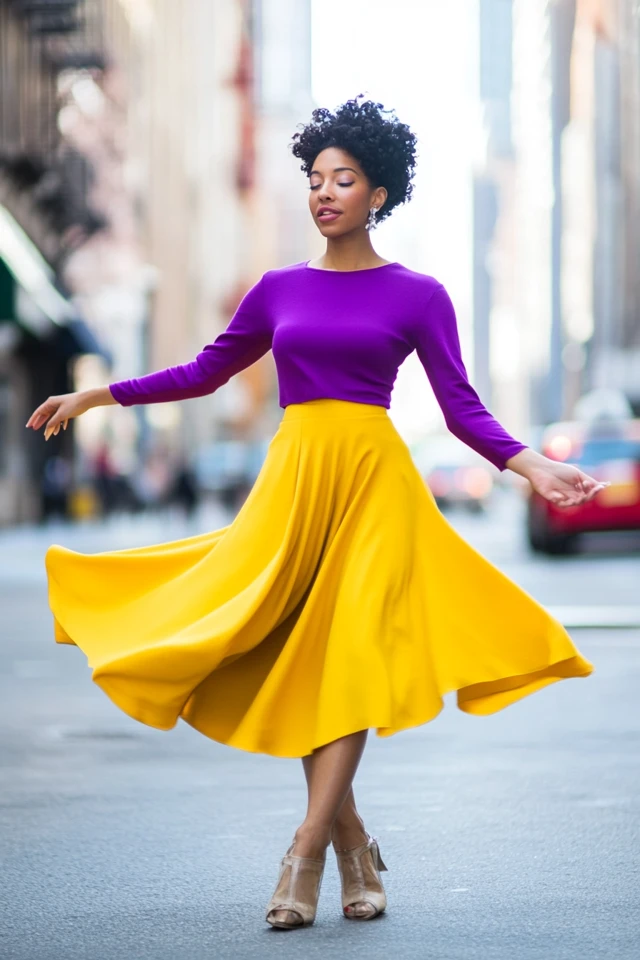
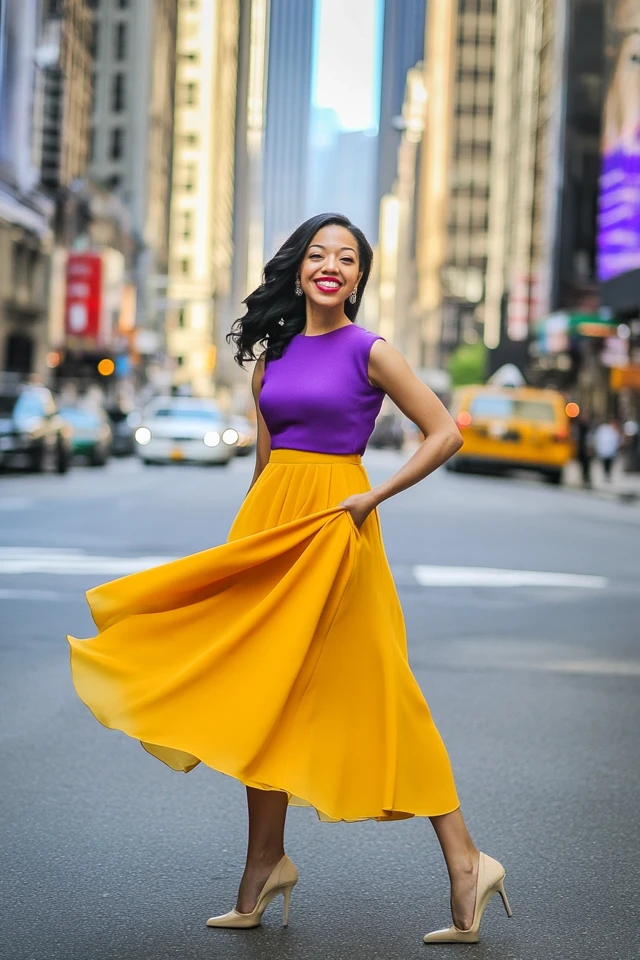
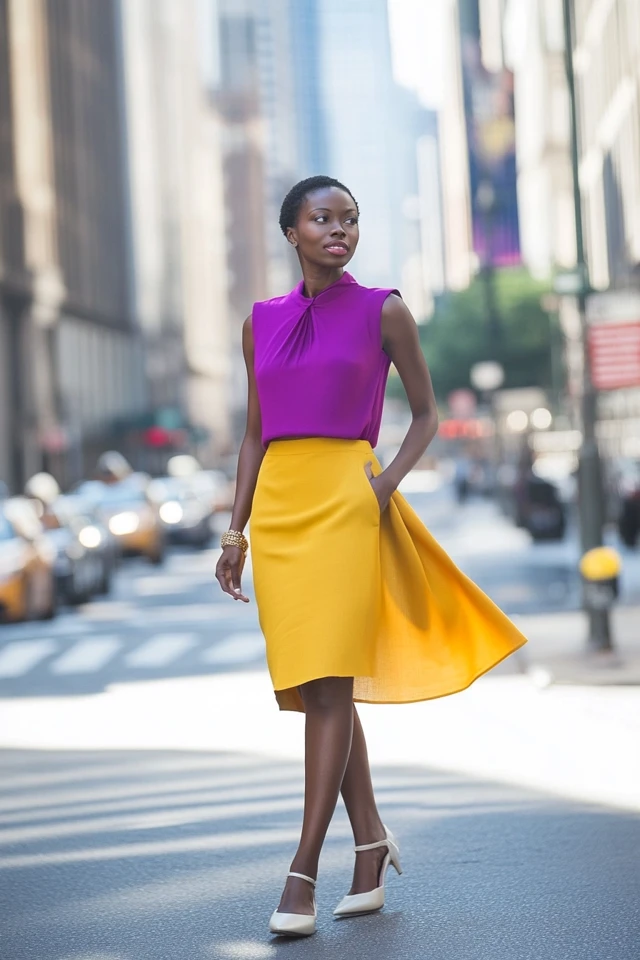
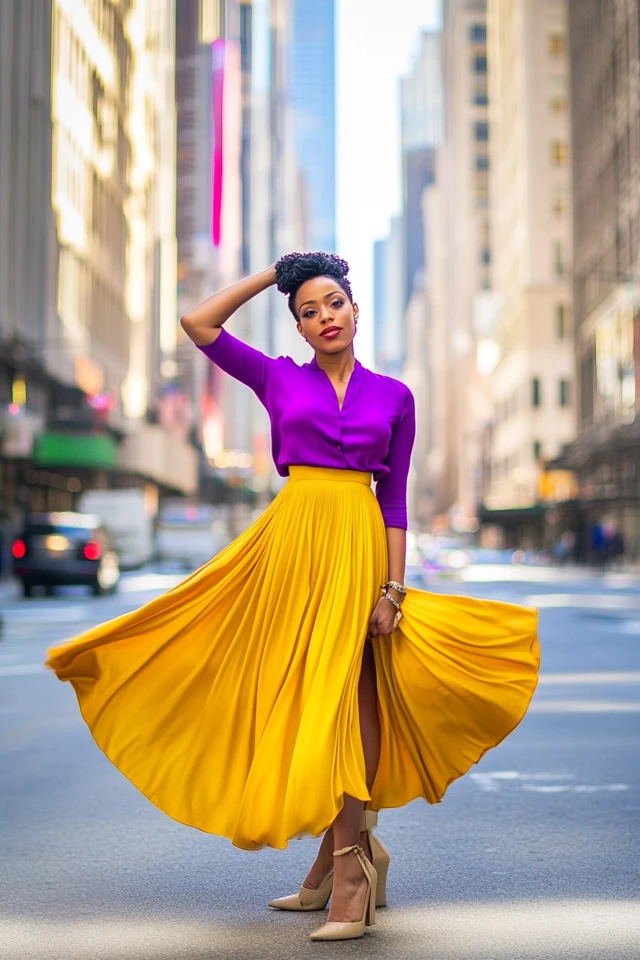
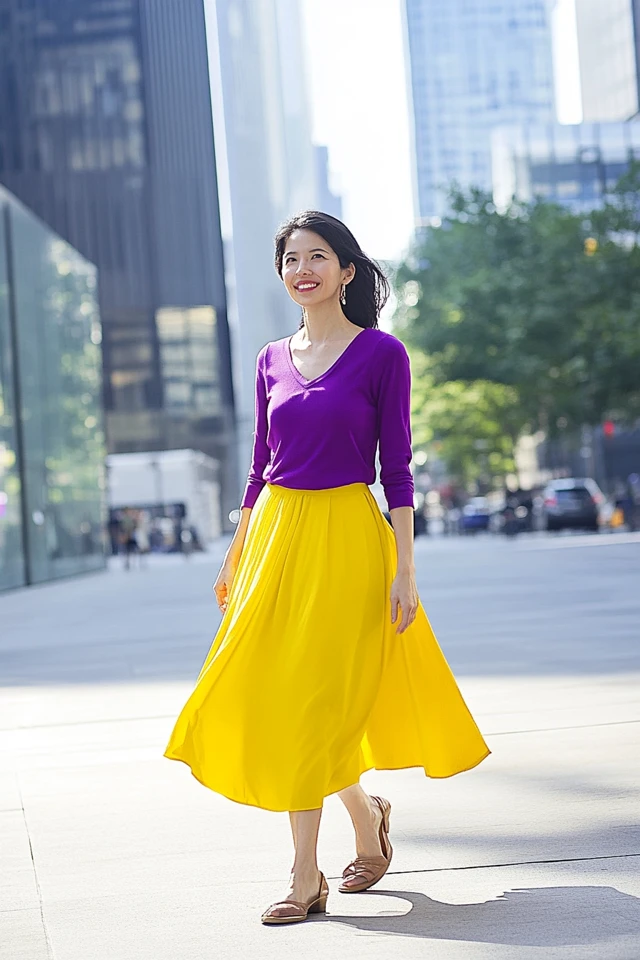
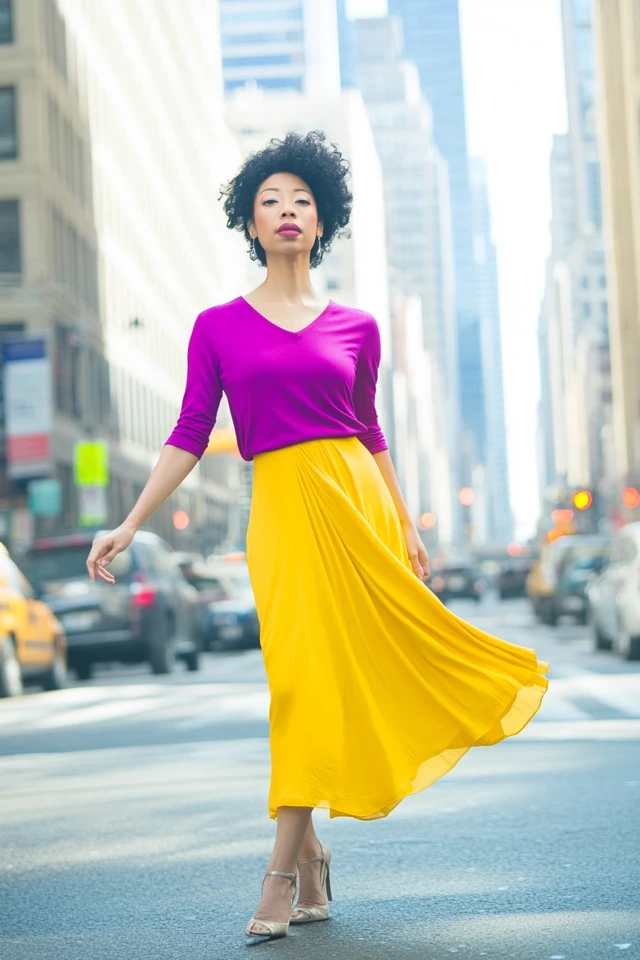
Conclusion
Incorporating complementary colors like mustard, wine, and forest green into your wardrobe can transform your style, adding depth, vibrancy, and harmony to your outfits. Understanding the principles of the color wheel and the dynamic interplay between complementary hues allows you to create balanced and visually appealing ensembles that stand out with sophistication and flair. Whether you’re aiming for a casual day out, a professional setting, or a glamorous evening event, the strategic use of complementary colors can enhance your appearance and express your personal style with confidence.
By experimenting with different combinations, balancing bold and neutral tones, and thoughtfully accessorizing, you can master the art of using complementary colors to create harmonious and stylish looks. Embrace the versatility and impact of complementary hues, and let your wardrobe reflect the vibrant and balanced essence that these colors bring. Happy styling, and may your outfits always shine with the perfect blend of complementary colors!

